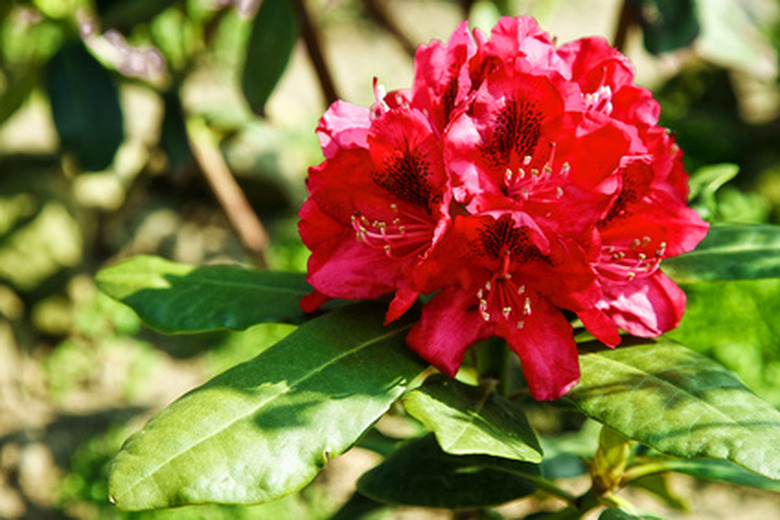How To Kill Rhododendron In The Winter
Rhododendrons are poisonous and can kill animals and even people if the plants are eaten. Whatever the reason, if you have rhododendron bushes and want to kill them, there are many methods to do so, including drowning, starving and poisoning them. However, in the winter, rhododendrons are not actively growing, and your choices are limited. Digging them up and discarding them is then the best method to get rid of them. Do this before the ground freezes or wait until it thaws and is workable again to kill your rhododendron bushes during the winter months.
Step 1
Saturate the soil with an inch or two of water a couple days before you plan to dig it up. This will make it easier to dig; however, skip this step if temperatures are below freezing.
- Rhododendrons are poisonous and can kill animals and even people if the plants are eaten.
- Do this before the ground freezes or wait until it thaws and is workable again to kill your rhododendron bushes during the winter months.
Step 2
Dig a circle around the perimeter of your rhododendron. The bulk of the roots are as wide as the plant's canopy, so dig as wide as your bush. Dig only about 4 inches deep.
Step 3
Cut in toward the center of your plant. If you feel the root ball, dig a couple inches deeper before cutting in. The goal is to get as much of the rhododendron's root ball as possible.
Step 4
Lift the bush out of the soil. You may need help with this step since a rhododendron bush, plus the roots and soil surrounding them, can be extremely heavy.
- Dig a circle around the perimeter of your rhododendron.
- The bulk of the roots are as wide as the plant's canopy, so dig as wide as your bush.
Step 5
Brush off as much soil as possible and haul away your bush. Take it to your local yard waste facility or burn it if you are permitted to do so in your town. If you leave it be, it will survive and continue to grow in the spring, even out of the ground.
Rhododendron Trees
There is a great deal of variety between the different rhododendron species. Piedmont azalea blossoms range in color from deep rose to white. Some produce pale lavender or deep purple blossoms, while others have blue, salmon, deep red, yellow, white or cream-colored blooms. The McCabe Rhododendron (Rhododendron macabeanum) is an evergreen variety that can grow as tall as 50 feet. Rhododendrons that are planted in areas with poor drainage tend to develop root rot diseases because they do not get the necessary amounts of oxygen. Remove the plant from its root sack or container and gently loosen the roots with your hand. Create a soil mixture using about half of the original soil and approximately half organic material such as deteriorated, dead leaves or compost. Water thoroughly but slowly, giving the soil time to absorb the moisture. The University of Georgia recommends against fertilizing during the planting process, since fertilizer can damage the roots. Rhododendrons occasionally suffer from leaf chlorosis. The bark may split, and sometimes the leaves turn brown or fall from the plant.
- Brush off as much soil as possible and haul away your bush.
- The University of Georgia recommends against fertilizing during the planting process, since fertilizer can damage the roots.
References
- Woodland Nurseries: Ten Ways To Kill a Rhododendron
- Rhodyman: Toxicity of Rhododendrons to People and Animals
- Clemson Cooperative Extension: Rhododendron
- University of Missouri Extension: Growing Azaleas and Rhododendrons
- Fine Gardening: Genus Rhododendron (Azalea)
- Royal Horticultural Society: Rhododendron
- University of Georgia College of Agricultural and Environmental Sciences: Selecting and Growing Azaleas
- Clemson Cooperative Extension: Azalea Planting
- University of California Statewide Integrated Pest Management Program: Pests in Gardens and Landscapes – Rhododendron
- Royal Horticultural Society: Rhododendron macabeanum AGM
